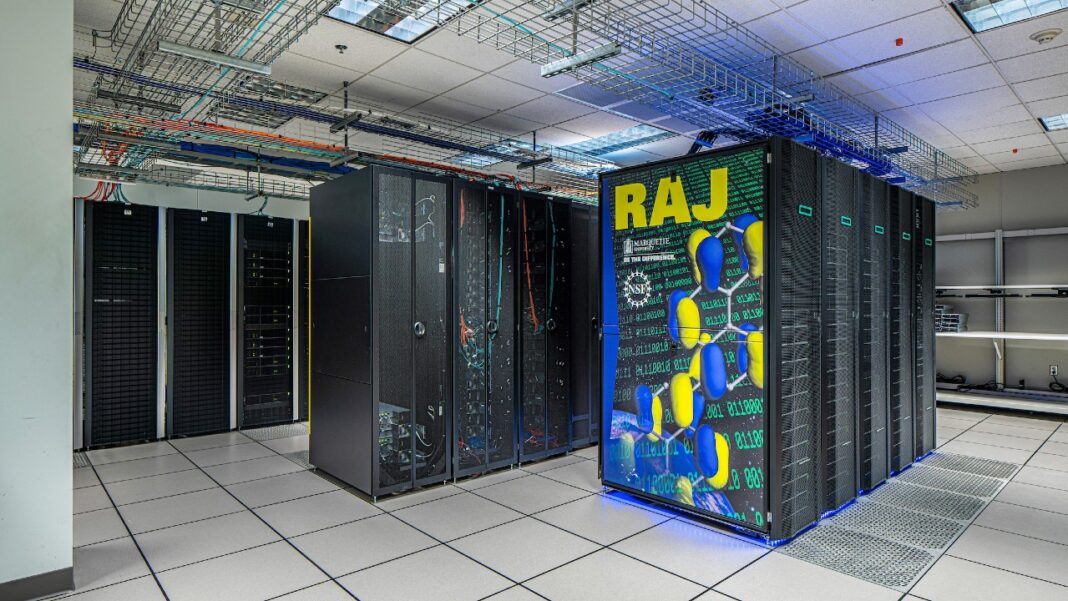Marquette University recently opened its new high-performance computer cluster called Raj, which is aptly named after Dr. Rajendra “Raj” Rathore, a Marquette chemistry professor who died in February 2018.
The $1.5 million computer cluster provides Marquette researchers and students in the math, science, engineering and technology fields with cutting-edge research capabilities. In addition to traditional number-crunching, Raj can be used in several machine learning and artificial intelligence applications.
The new HPC was brought online in April, but the university unveiled Raj in a ribbon cutting ceremony last week on campus at Cudahy Hall, 1313 W. Wisconsin Ave.
“These days, high-performance computing is an essential part of the research in STEM disciplines and beyond,” said Dr. Qadir Timerghazin, Marquette associate professor of chemistry. “As a major component of Marquette’s research infrastructure, this cluster will be used by researchers throughout campus.”
Raj was purchased in part through a Major Research Instrumentation grant from the National Science Foundation. However, it was through Rathore’s efforts that Marquette’s Chemistry Department obtained NSF grant funding for the new supercomputer.
Despite being very ill, Rathore conceived a vision of a compelling grant application and from his hospital bed, enlisted Timerghazin and Marquette chemistry professor Dr. Scott Reid to complete the application that was eventually funded by the NSF, according to a press release.
“It’s part of Raj’s legacy,” Timerghazin said of the new cluster. “His passing was a huge loss for our department.”
Raj replaces Marquette’s previous high-performance computer cluster Père, which was installed in the late 2000s and contributed to approximately 200 research papers published by Marquette researchers.
Raj is built with Hewlett-Packard Enterprise servers using the AMD Rome line of EPYC processors as well as NVIDIA Tesla V100 GPUs and is equipped with 1.5 petabytes storage array. It has a total of 7,808 CPU cores and 48 GPUs, including three 8-GPU nodes designed for advanced artificial intelligence and machine learning applications.
In 2019, Milwaukee School of Engineering unveiled its supercomputer “Rosie,” which is located in the Dwight and Dian Diercks Computational Science Hall. Rosie has three NVIDIA DGX-1 pods, each with eight NVIDIA V100 Tensor Core GPUs, and 20 servers each with four NVIDIA T4 GPUs. The nodes are joined together by Mellanox networking fabric and share 200 terabytes of network-attached storage.


